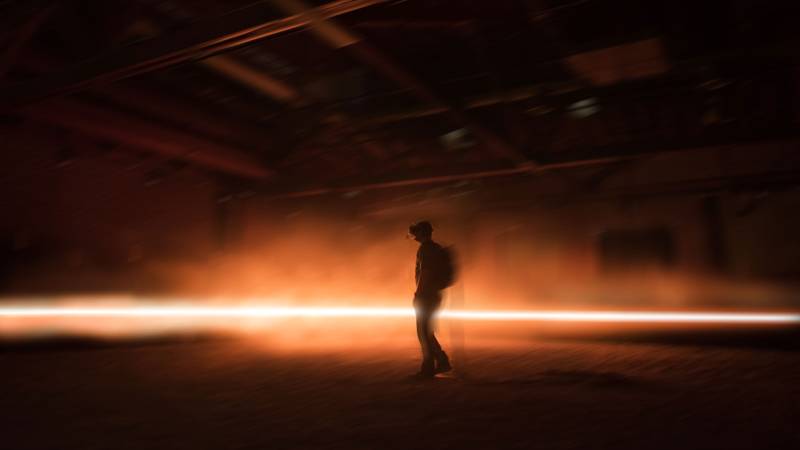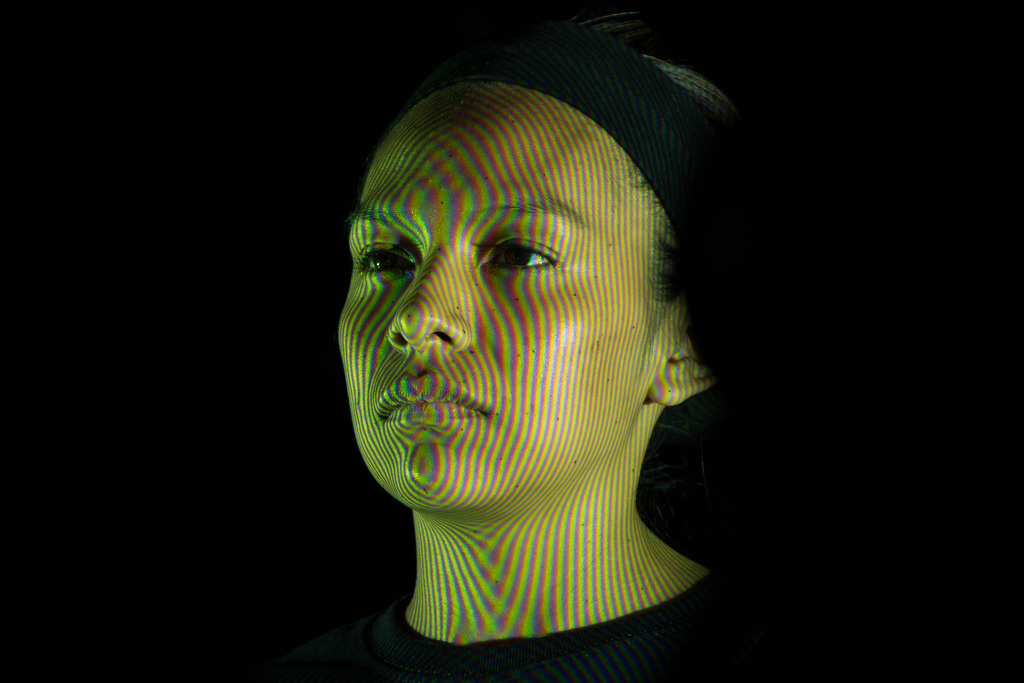There are two “immersive” experiences next door to each other at Richmond’s Craneway Pavilion, and content-wise, they couldn’t be further apart. One promises to take visitors on an interactive journey across outer space. The other, a virtual reality installation by the Mexican film director Alejandro G. Iñárritu (Birdman), is a journey across the U.S.-Mexico border.
The Terror and Confusion of Border Crossing Comes to Life in Virtual Reality

I’ve written my fair share about chaotic projected light and sound shows that operate under the guise of “feeling” fine art. But where Immersive van Gogh, Immersive Frida Kahlo and Imagine Picasso have presented grab-bags of famous paintings zooming and morphing across blank surfaces, only lightly gesturing to an artist’s biography, Carne y Arena is made by an Academy Award-winning storyteller. (The VR installation garnered the director his third Oscar in 2017.)
Though Carne y Arena depicts a group scenario — the heart-stopping terror that migrants experience when meeting U.S. Border Patrol — visitors move through the experience alone. That sense of isolation, the feeling of great distance from safety and comfort, heightens at each stage of the installation until viewers come face-to-face with the men, women and children whose real-life experiences informed Iñárritu’s “truthful alternate space.”

There are no actors here, the installation prefaces, only people reenacting their own stories, often in the same clothes they wore while crossing the border, usually on foot and at night, across the deadly Sonoran Desert.
Carne y Arena begins where some of those migrants ended their journeys, in freezing Customs and Border Protection holding cells. In the installation, visitors are instructed to remove their shoes and socks, then await further instruction. I sat for long minutes in the brightly lit “cold room,” surrounded by water jugs and shoes (many achingly small) found in the Arizona desert. I tried to let only my heels touch the frigid floor. A high-pitched whine filled the air.
Here, another bit of didactic text describes the origin of the scattered possessions, concluding with the fact that 10,000 migrants have died attempting to cross. An unfathomable number. And yet 2022 has been the deadliest year ever; more than 800 migrants have died border-wide. (Before that, 2021 set a record high with over 560 deaths.)
Chilled and somber, visitors are released into a dimly lit space. The floor is covered in imported Arizona desert sand. A staff member helps you into a VR headset and headphones with a brief explanation of how they’ll keep you from running into walls (gentle redirection via shoulders). And then you’re somewhere else.
The beautiful landscape is only visible for a moment before it’s night, and you’re in the midst of a group of exhausted migrants moving slowly across what you now recognize as a desolate terrain. Border Patrol arrives suddenly — inevitably — but with such force and noise that it’s panic-inducing. I caught myself about to let out a yelp, and tried to remember where I was, and that a stranger was watching me.
It’s possible others will walk calmly through Carne y Arena’s VR with detachment, but I doubt it. Under a helicopter spotlight, with yelling Border Patrol agents, crying migrants, cowering figures and enormous guns, Iñárritu enacts a magical sequence that ties this very specific experience to other dangerous routes of migration. It’s a temporary, eerie respite.
The chaos seems to increase even as the migrants are hustled into cars. You are a ghost, peering into people’s rapidly beating chests, and you are also one of the apprehended, struggling to respond to a situation that’s completely beyond your control. And then the scene is over as suddenly as it all started; the desert is the desert again. But this time the absence of people spells disaster, it promises yet another scene of confusion and violence as soon as night falls.
If this all sounds heavy — it is.
Carne y Arena eliminates the traditional distance between audience and art that allows us to regard even a well-executed cinematic narrative in the abstract. The VR aspect, immersive as it is, reinforces just how little we are glimpsing. Larger life stories that involve the dangers of home countries in Central America, including gang threats against women and children, are spelled out on small video screens bearing the participants’ faces. In their unique stories, commonalities emerge: robberies, ruthless coyotes, cramped quarters, harrowing multi-day journeys without food or water.
At every step, migrants are targeted by more powerful people. Even upon their arrival in the United States, recent migrants have unwittingly become actors in theatrical political moves. But in Carne y Arena, Iñárritu’s participants play themselves, crafting, with the director, a “realistically unreal experience” that closes the distance between conceptual understanding and lived ordeal.
This is an immersive experience that justifies — and radically expands — its form. Forget the metaverse. This is how we should be using VR.

‘Carne y Arena’ is on view at the Craneway Pavilion (1414 Harbour Way S, Richmond) through Jan. 28, 2023. Details here.

